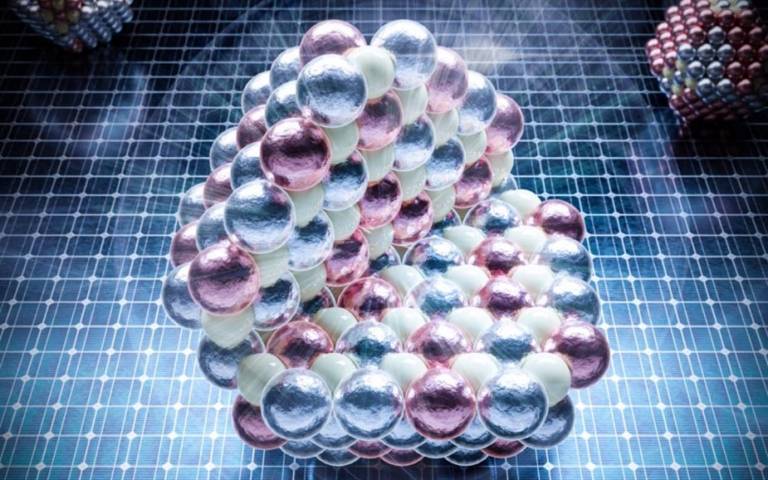A team co-led by UCL researchers has substantially increased the efficiency of a new type of solar cell, potentially paving the way for its use as a low cost, environmentally friendly alternative to existing solar power technology.

Standard solar cells are silicon-based, but they are bulky, expensive and energy intensive to produce. Current ultrathin alternatives, which can be applied to windows and can generate energy while allowing visible light in, are mainly composed of toxic elements such as lead or cadmium, or contain scarce elements such as indium or tellurium.
In a new study, published in Nature Photonics, the research team investigated how to improve the efficiency of a newer type of solar cell, made from nanocrystals containing two kinds of metal atoms - silver and bismuth.
Using complex computer modelling, researchers at UCL found that an even, 50/50 spread of silver and bismuth atoms across the material increased how much light the nanocrystals absorbed, allowing more energy to be generated.
Colleagues at ICFO in Spain fabricated ultrathin solar cell material (100 nanometres or one 10,000th of a millimetre thick), heating up the nanocrystals to ensure a more even spread of metal spheres, and recorded a power conversion efficiency of more than 9% (that is, more than 9% of the energy input from sunlight was converted into electricity). While this may not seem enormous, the maximum physically-possible solar cell efficiency is 30%, so this is a major result.
Researchers say this level of efficiency could make the technology commercially viable, but that more improvement is needed to make the technology as efficient as silicon-based solar cells.






